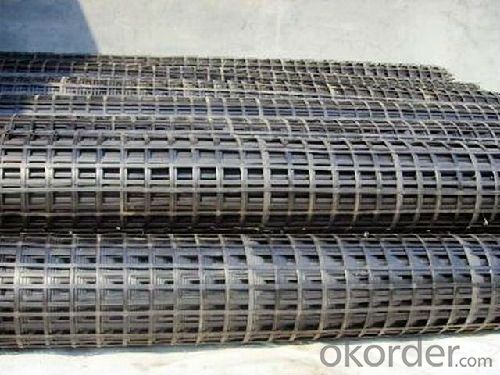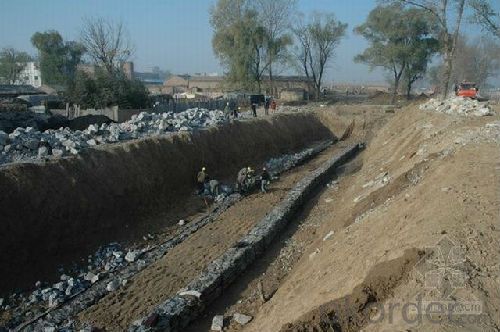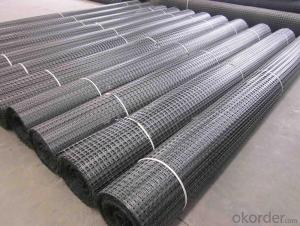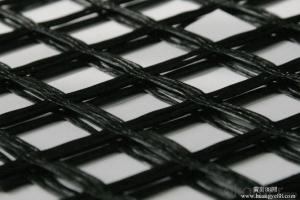Biaxial Polypropylene Geogrid Geocells for Road Construction in South Africa
- Loading Port:
- Qingdao
- Payment Terms:
- TT or L/C
- Min Order Qty:
- 20000 m²
- Supply Capability:
- 10000000 m²/month
OKorder Service Pledge
OKorder Financial Service
You Might Also Like
PP Uniaxial geogrid Product Profile
25-25KN,30-30KN,50-50KN,80-80KN,100-100KN,120-120KN,150-150KN,200-200KN
Width≤6m; Length 50m or as requested
PP Uniaxial geogrid Product Features
1. In high tensile strength
2. Low elongation
3. Anti-erosion, anti-aging
4. Light weight, structural uniformity, easy for construction
5. Flame retardant, anti-static, good overall performance, easy for mechanized operation
6. Good affinity with base materials
PP Uniaxial geogrid Product Specifications
Speification | Unit | 35 | 50 | 80 | 110 | 150 | 200 |
Width | m | 1 or 1.1 or 2.5 or 3 | |||||
Tensile strength | kN/m | 35 | 50 | 80 | 110 | 150 | 200 |
Elongation | % | 10 | 10 | 10 | 10 | 10 | 10 |
Tensile strength at 2% strain | kN/m | 10 | 12 | 26 | 32 | 42 | 56 |
Tensile strength at 5% strain | kN/m | 22 | 28 | 48 | 64 | 84 | 112 |
FAQ
1. What's the usage of geogrid?
It's used for reinforce the roadbeds in softe soil, railway and dam etc. It has good performance on preventing the cracks.
2. How about your quality of geogrid?
We have strict quality control system, we make testing on incoming raw material and finished products. Your third party testing is also welcomed. With high quality, our products are used on government projects at home and abroad. Our product quality is accepted by clients from all over the world.



- Q: How do geogrids help in reducing the risk of settlement of structures?
- Geogrids help in reducing the risk of settlement of structures by providing reinforcement and stability to the soil. They are placed within the soil layer to distribute and transfer the load more evenly, thereby reducing the potential for settlement. By increasing the soil's strength and load-bearing capacity, geogrids help prevent excessive settlement and improve the overall stability and longevity of the structures.
- Q: Can geogrids be used in reinforcement of tunnels and underground excavations?
- Yes, geogrids can be used in the reinforcement of tunnels and underground excavations. Geogrids are commonly utilized in such applications to enhance soil stabilization, reduce soil movement, and provide structural support. They can effectively distribute the load and improve the overall stability and longevity of tunnels and underground excavations.
- Q: How to distinguish the vertical and horizontal geogrid
- Generally do not distinguish between vertical and horizontal
- Q: How do geogrids improve the load-bearing capacity of soils?
- Geogrids improve the load-bearing capacity of soils by providing reinforcement and stabilizing the soil matrix. When geogrids are installed within a soil mass, they create a strong interlocking system, distributing the applied loads more evenly and reducing the potential for soil movement or settlement. This reinforcement effectively increases the soil's shear strength and overall stability, enabling it to withstand higher loads and improve its load-bearing capacity.
- Q: How do geogrids enhance the stability of mechanically stabilized earth walls?
- Geogrids enhance the stability of mechanically stabilized earth walls by providing reinforcement and distributing the applied loads throughout the soil mass. They increase the tensile strength of the soil, preventing excessive lateral movement or deformation. This reinforcement helps to resist the forces exerted by the retained soil, improving the overall stability and performance of the wall.
- Q: How do geogrids help with load distribution?
- Geogrids help with load distribution by distributing the applied loads over a wider area, thereby reducing the concentration of stress on the underlying soil or pavement. They act as a reinforcement by interlocking with the surrounding soil or aggregate, improving the overall stability and load-bearing capacity of the structure.
- Q: Geotextiles and geogrids to do the re inspection approach?
- In theory it is necessary
- Q: Can geogrids be used in bridge abutments and approach embankments?
- Yes, geogrids can be used in bridge abutments and approach embankments. Geogrids are commonly used in these applications to provide soil reinforcement and stability, preventing soil erosion and enhancing load-bearing capacities. They help distribute loads more evenly, reduce settlement, and increase the overall strength of the structure. Additionally, geogrids are cost-effective and easy to install, making them a popular choice for bridge construction projects.
- Q: How do geogrids prevent differential settlement?
- Geogrids prevent differential settlement by distributing and reinforcing the load across a wider area, providing stability and preventing the shifting or settlement of soil.
- Q: How do geogrids improve the performance of geotextile tubes?
- Geogrids enhance the performance of geotextile tubes by providing additional strength and stability. They reinforce the structure, increase load-bearing capacity, and prevent deformation or bulging of the tubes. This improves their overall durability and effectiveness in erosion control, soil stabilization, and other applications.
1. Manufacturer Overview
| Location | Shandong, China |
| Year Established | 2002 |
| Annual Output Value | Above US$ 20 Million |
| Main Markets | 20.00% North America 15.00% South America 15.00% Eastern Europe 10.00% Southeast Asia 10.00% Northern Europe 10.00% South Asia 10.00% Western Europe 5.00% Africa 5.00% Mid East |
| Company Certifications | ISO9001:2000; |
2. Manufacturer Certificates
| a) Certification Name | |
| Range | |
| Reference | |
| Validity Period |
3. Manufacturer Capability
| a) Trade Capacity | |
| Nearest Port | Qingdao Port |
| Export Percentage | 41% - 50% |
| No.of Employees in Trade Department | 6-10 People |
| Language Spoken: | English; Chinese; |
| b) Factory Information | |
| Factory Size: | Above 80,000 square meters |
| No. of Production Lines | Above 10 |
| Contract Manufacturing | Design Service Offered; Buyer Label Offered |
| Product Price Range | High; Average |
Send your message to us
Biaxial Polypropylene Geogrid Geocells for Road Construction in South Africa
- Loading Port:
- Qingdao
- Payment Terms:
- TT or L/C
- Min Order Qty:
- 20000 m²
- Supply Capability:
- 10000000 m²/month
OKorder Service Pledge
OKorder Financial Service
Similar products
Hot products
Hot Searches
Related keywords
































